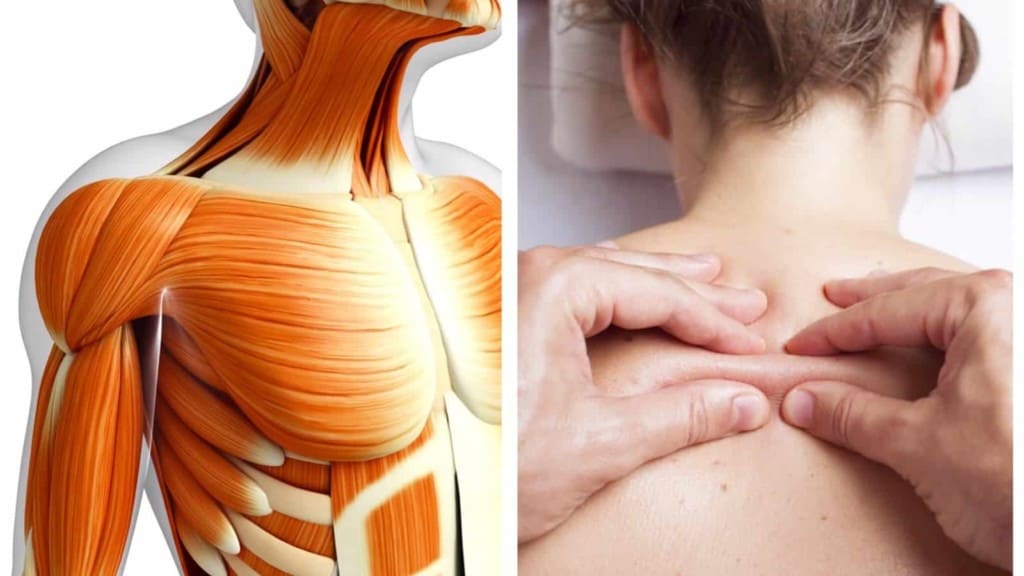When most of us have body pain, we usually attribute it to sore, tired muscles or bones. Perhaps we worked too long on the computer the previous day, which caused tension in the shoulder or neck muscles. Or, maybe we feel slight pain in our knees from picking up a box at work incorrectly. This motion may have put undue strain on the muscles and ligaments in our legs.
Since bodies are incredibly complex, pain can stem from almost anywhere, making it difficult to pinpoint a direct cause. However, not all pain results from certain movements or occurs suddenly after straining a muscle. You might feel pain for no apparent reason, making you wonder if you should see a doctor ASAP. Pains of this sort can leave you feeling unsettled and worried, justifiably so.
When you feel body pains with no obvious trigger, your fascia could be the culprit. This thin casing of tissue connects every bone, organ, blood vessel, nerve fiber and muscle in the body. The connective tissue not only provides an internal structure for the organs but contains highly sensitive nerves that respond to pain.
Below, we’ll talk more about this lesser-known body part and how it can cause pain. We will also discuss how to alleviate the pains by getting to the root cause of the problem.
The Single Body Part That Causes Most Pain (And How To Fix It)
Dr. Mary Ann Wilmarth, a world-renowned physical therapist and former head of physical therapy at Harvard University Health Services, believes many aches and pains stem from fascia complications. Even if you can’t feel it, fascia connects every internal structure in the body and plays a crucial role in mobility.
As you move, fascia stretches and conforms to your body during various activities. However, if it thickens for some reason, it can lead to painful joints and muscles.
According to Dr. Wilmarth, medical professionals and other experts in human physiology have been fascinated with this “mystery tissue” for many years. However, it wasn’t until around 2007 – at an “international fascia research conference” at Harvard – that they fully understood fascia’s importance. [Since then, numerous fascia conferences and other related events have been held at multiple venues, including Harvard Medical School.]
How Fascia Can Cause Body Pains
As mentioned, fascia consists of an intricate network of connective tissue. To comprehend how fascia impacts important physiological functions, we must understand its makeup, including a basic understanding of sensory neurons.
Sensory neurons transmit signals from a receptor, such as the eyes or ears, to the nervous system and brain. These nerve cells communicate information that they have received from external stimuli. For instance, if you touch a hot stove, your sensory neurons would transmit a pain response to the brain, activating pain receptors.
Now, consider that we have up to six times as many sensory neurons in our fasciae than in any other body tissue (besides the skin). This inordinately complex system allows communication between the brain and other areas of the body, including muscles. For instance, even having the urge to stand up and stretch occurs because of fascia communicating between nerve cells.
When you have lower back tension from sitting too long, you relieve it by arching your back. Without fascia communication, you would never get the signal from your brain to stretch your muscles. We tend to overlook this complex sensory organ, but perhaps it deserves more of our attention.
Keeping our fascia healthy improves our limberness and range of motion. When fascia become imbalanced, neural signals misfire and the brain may interpret this malfunction as pain. So, how can you fix this pain response and ensure the fascia functions properly?
How to Alleviate Fascia Pain
Below, we’ll discuss a few fascia-related aches and pains you may experience, along with how to fix them.
Muscle Stiffness/Cramping Upon Waking
When you wake up, you may feel a bit stiff or tense due to lying in bed for 7-8 hours. To relieve this feeling, slowly stretch out both arms and legs and roll your body from side to side. Next, sit on the edge of the bed, flex out and point your feet. This will help alleviate any leg or foot cramps that may occur as you get out of bed.
Activity-Related Injury
Just as fascia can tense up without sufficient movement, it can also become inflexible due to overactivity. This usually results from repetitive, strenuous movements that overwork one area of the body. To fix this, purchase a high-quality foam roller and roll your body over it to relieve tension. You can also use tennis balls to massage fascial layers, or even do yoga poses that target painful areas.
Subtle Tension
Muscles and tissues, including our fascial tissues, can become “tense” without adequate hydration. The simplest fix here involves drinking plenty of water throughout the day to keep your joints lubricated. Also, make sure that you stand up and stretch every so often to alleviate muscle tension. Going for walks during a lunch break or after work will also do wonders for body pain.
Preventing Fascia Injury
As they say, prevention is better than a cure in any situation. In order to prevent fascia injury from occurring, it’s important to remain physically active. Whether you enjoy lifting weights in the gym or going for brisk walks, any type of movement will have a positive effect on the fascia. Also, don’t forget to stretch before and after exercising, as this will improve flexibility and prevent injury. Finally, pay attention to your posture, making sure to sit up straight while using a computer or smartphone. Slumping over at your desk can put a strain on neck and shoulder muscles, possibly causing an injury.
Final Thoughts: See the Right Professional to Relieve Your Pain
If you’ve tried all of the above and still don’t feel better, consider getting professional help. The densely interconnected nature of fascia makes some aches, pains, and discomforts difficult to remedy. Massage therapists, physical therapists, and even acupuncturists can help find the source of your pain and employ the appropriate therapeutic method(s) for relief.















 Community
Community

